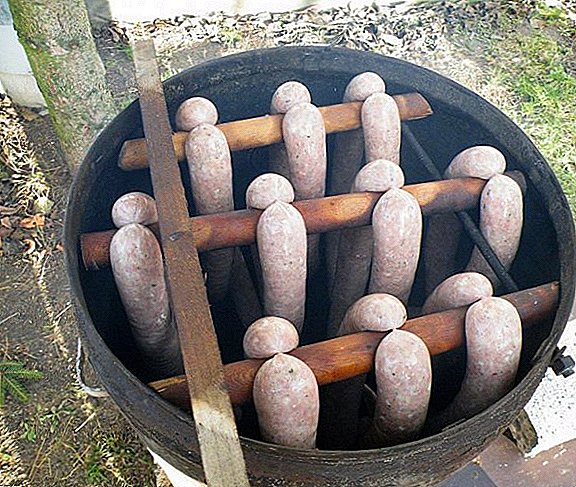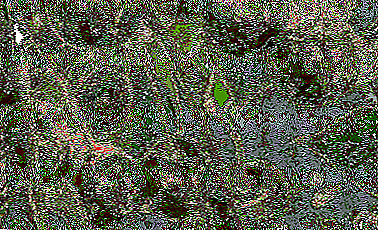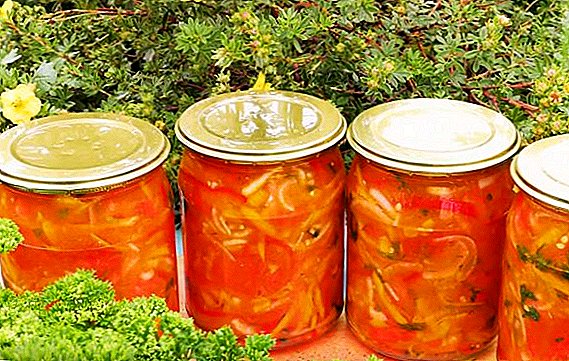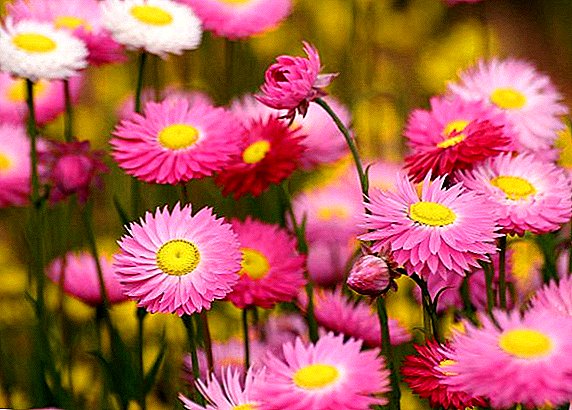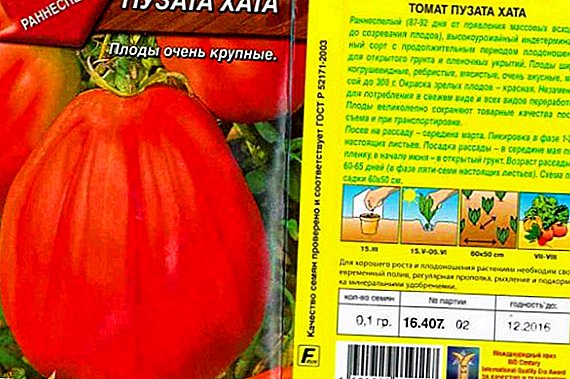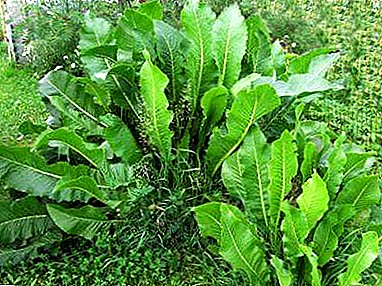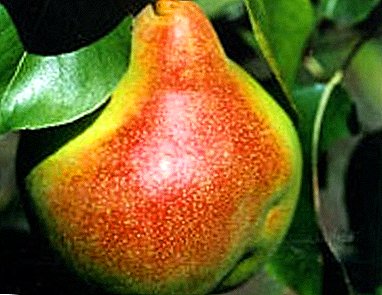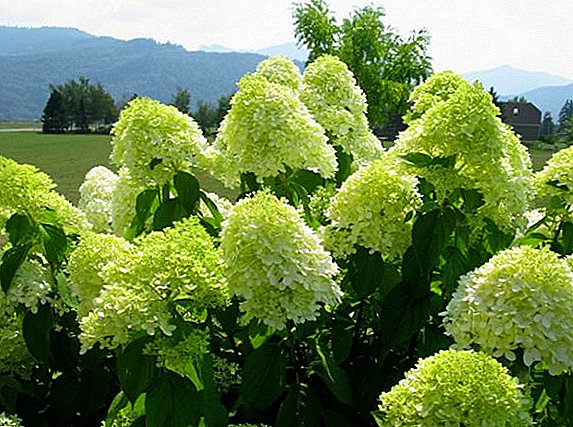 Hortensia paniculata belongs to the list of the oldest garden plants native to Japan. And the Limelight variety has been bred relatively recently, but has repeatedly won high awards and prizes at exhibitions and flower growers forums. The extraordinary beauty and strength of the shoots is the key to the success of hydrangea Limelight.
Hortensia paniculata belongs to the list of the oldest garden plants native to Japan. And the Limelight variety has been bred relatively recently, but has repeatedly won high awards and prizes at exhibitions and flower growers forums. The extraordinary beauty and strength of the shoots is the key to the success of hydrangea Limelight.
Hortensia paniculata Limelight
Botanist, physician and traveler Philibert Commerson, studying Japan, stopped in front of a gorgeous shrub. Local residents could not remember the name of the plant. A French scientist himself called a bush named his beloved girl - Hortensia. The name is remembered and rooted.

There are many varieties of this family. Hortensia Limelight belongs to the form of paniculate. The shrub, reaching up to two meters in height and a crown diameter of up to 1.5-2 meters, was brought by Dutch breeders. The bush is extraordinarily beautiful and is characterized by a bright green color (lime color) of inflorescences at the very beginning of flowering. Later becomes pale lemon or white color. In the autumn inflorescences become pale pink.
We recommend that you familiarize yourself with the nuances of growing a hydrangea tree, as well as with the diversity of its varieties (in particular, with the features of the Annabel variety).
Florists Holland coped with the main problem of hydrangeas - strength of shoots that withstand heavy weight of lush inflorescences. Limelight when flowering does not need supports and garters. Flowers delight with their views from July to September, sometimes until good weather, until October.

Lush foliage has a juicy green color and velvety structure, being a sharp contrast against the background of inflorescences.
Important! Soils with a predominance of sand, limestone are categorically not suitable, until the death of plants.
Landing fundamentals
All hydrangeas are long-lived and have a superficial root system. Plot for them is chosen taking into account the long stay. In the event of a transplant, the root system is damaged.
The soil
Ideal soils for the limelight variety are considered black soil with an acidic environment and high-quality fertilized loam.
As a top dressing of plants also use: "Chunky", nitroammofosku, "Kemira", "Ammophos", biohumus.
The introduction of ash, lime or chalk is not recommended, the plant may stop blooming or even die. At the same time, such top dressing will be destructive even if these substances are brought near the root system. But sawdust or coniferous land, by contrast, will contribute to the active growth of hydrangea.

Watering
In Latin, hydrangea means "a vessel with water." The plant loves moisture and suffers from drought. Young cuttings should be planted into the ground, preferably on a warm humid day in spring (end of April, May), abundantly watering the soil not only after planting, but also before planting.
Important! In the dry season, it is strongly advised to water the shrubs with water from a watering can, imitating the rain.
Lighting
Hortensia Limelight is ten-resistant, little light - not a barrier to growth and flowering. But still in the bright, quiet place of the garden, the bush will thank for its lush abundant buds.
Learn more about growing panicle hydrangea and its Phantom and Pinky Winky varieties.
Care
Leaving consists in watering, after which the soil is slightly loosened, freshly cut grass is added (mulched). In the autumn it is necessary to feed the bushes with complex fertilizers. In winter, adult plants do not require shelter, and the young spud and the okolostvolnoy earth sprinkled with a layer of foliage, peat.

An essential element in the care of hydrangea is pruning. In the autumn, dried inflorescences are removed, in spring - shoots killed by frost. The branches of the last season shorten to 5 buds, clean shoots directed inside the shrub (thin).
The period of flowering and fruit ripening
For the first time, hydrangea paniculata blooms at the age of 4-5 years. Flowering begins in July and lasts until October. Plentiful watering, good top dressing, high-quality leaving give magnificent, large and in a large number inflorescences. The hydrangea of this variety does not have fruit. All inflorescences are sterile. Breeding is usually carried out by dividing the bush.
Did you know? Breeders have grown a new smaller copy of hydrangea Limelight. And called Little Lime. Beauty and charm remained, but this plant grows a little more than a meter.
Use in landscape design
Both single shrubs and groups are involved in landscape projects. Not so long ago, the hydrangea was planted near the benches, arbors, near the main entrance of the country estates. Lilac shrubs and limelight harmonize in the color range of inflorescences.

Deciduous trees maple, birch, willow, located along with hydrangea, complement each other, emphasizing the advantages of each. The classic design remains the combination of hydrangea with conifers. Shrubs are so charming that designers consider it appropriate to use them in the Japanese style.
Multi-tiered complex flower garden (mixborder) with hydrangea Limelight in conjunction with roses, irises, peonies, garden jasmine looks wonderful.
Diseases
Diseases of hydrangeas are rare. The most common is called chlorosis. Developed due to lack of iron. It is a violation of the formation of chlorophyll in the leaves. The leaves turn yellow, become covered with brown spots, curl up and fall down, subject to changes and inflorescences. The plant dies.

The struggle for the plant is conducted by root dressings in the form of an iron salt and the simplest complex fertilizers (as a solution of potassium nitrate, as an example). Spraying leaves with special solutions is extremely effective.
Read also what are the main diseases of hydrangea and how to deal with them.
Pests
The main pests of hydrangea, as well as other plants, May beetles, scoops, aphids, mites. May beetles arrive in May and intensively feed on juicy leaves and flowers. Later the larvae complete the feast. Plant for no apparent reason withers, dries. No less dangerous scoops - omnivorous insects.
Did you know? The magic of "immortality" is enclosed in hydrangea flowers. Dying, they change the color tone to a brighter and more spectacular. This feature is used in winter compositions. Just protect the bouquet from the sun's rays.
Their family consists of butterflies of gray shades with a specific pattern on the wings. Lead evening and nightlife. Their caterpillars are in the soil.
For the extermination of these and other insect pests use drugs "Actellic", "Karbofos" and "Fitoverm".
Highly toxic drug "Aktellik" kills insects in a few minutes, protection persists for several days. Toxic "Malathion" differs in a rapid weathering, destruction under the influence of the sun, a rain. "Fitoverm" - a 4th generation drug that causes paralysis and insect death.

Horticulturists compare Hortense Limelight to a pearl for its pickyness and beautiful fragrant inflorescences that fade until autumn. Proper care, timely watering, active protection against pests and diseases will give large lush inflorescences, which even in winter will thank you with unfading beauty in the form of a winter flower composition.


